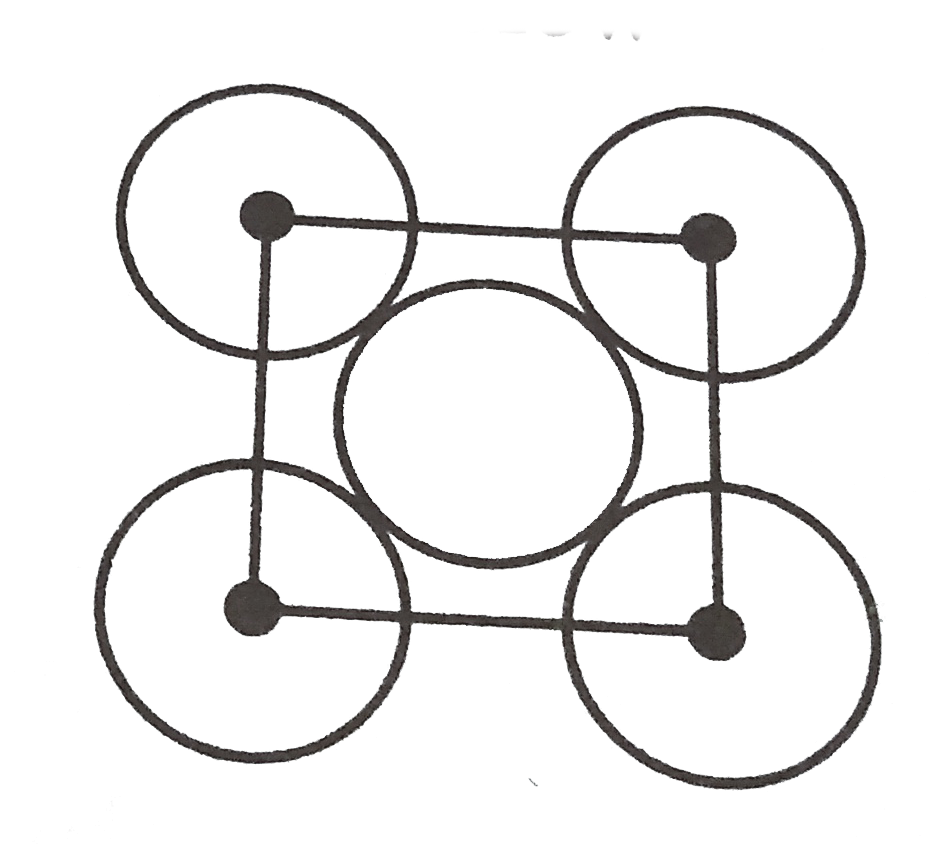Explain how can you determine the no. of atoms per unit cell of an unknown metal if you know its atomic mass , mass density and the dimensions of unit cell of its crystal.
To determine the number of atoms per unit cell (Z) of an unknown metal using its atomic mass (M), mass density (ρ), and the dimensions of the unit cell (a), follow these steps:
1. Understand the Relationship: The density (ρ) of a crystal can be expressed using the formula:
ρ=Z⋅Ma3⋅NA
where:
- Z = number of atoms per unit cell
- M = atomic mass of the metal (in grams per mole)
- a = edge length of the unit cell (in centimeters)
- NA = Avogadro's number (6.022×1023 mol−1)
2. Rearrange the Formula: To find Z, rearrange the formula to isolate Z:
Z=ρ⋅a3⋅NAM
3. Calculate the Volume of the Unit Cell: The volume of the unit cell can be calculated as:
V=a3
where a is the length of one edge of the cubic unit cell.
4. Substitute Values: Substitute the known values of density (ρ), atomic mass (M), edge length (a), and Avogadro's number (N_A) into the rearranged formula.
5. Perform the Calculation: Carry out the calculation to find Z.
Example Calculation:
Assuming:
- ρ=8g/cm3
- M=56g/mol
- a=4cm
Substituting these values:
1. Calculate a3:
a3=43=64cm3
2. Substitute into the formula for Z:
Z=8g/cm3⋅64cm3⋅6.022×1023mol−156g/mol
3. Calculate Z:
Z=8⋅64⋅6.022×102356
Z=3072⋅6.022×102356
Z≈3.29×1023 atoms/unit cell
Final Result:
The number of atoms per unit cell Z can be calculated using the provided values.
ρ=Z⋅Ma3⋅NA
where:
- Z = number of atoms per unit cell
- M = atomic mass of the metal (in grams per mole)
- a = edge length of the unit cell (in centimeters)
- NA = Avogadro's number (6.022×1023 mol−1)
Z=ρ⋅a3⋅NAM
V=a3
where a is the length of one edge of the cubic unit cell.
Assuming:
- ρ=8g/cm3
- M=56g/mol
- a=4cm
1. Calculate a3:
a3=43=64cm3
Z=8g/cm3⋅64cm3⋅6.022×1023mol−156g/mol
Z=8⋅64⋅6.022×102356
Z=3072⋅6.022×102356
Z≈3.29×1023 atoms/unit cell
The number of atoms per unit cell Z can be calculated using the provided values.
Similar Questions
How can you determine the atoic mass of an unknown metal if you know its density and the dimension of its unit cell ? Explain.
View SolutionHow can you determine the atoic mass of an unknown metal if you know its density and the dimension of its unit cell ? Explain.
View SolutionThe number of carbon atoms per unit cell of diamond unit cell is
View SolutionThe number of carbon atoms per unit cell of diamond unit cell is
View SolutionThe number of atoms per unit cell in bcc lattice is
View SolutionThe number of NaCl molecules in unit cell of its crystal is
View SolutionHow many atoms constitute one unit cell of simple cubic crystal?
View SolutionWhat is the number of atoms in a unit cell of a face-centred cubic crystal ?
View SolutionThe number of atoms per unit cell of the two dimensional square unit cell shown below is:

View SolutionThe formula for determination of density of unit cell is
View Solution
